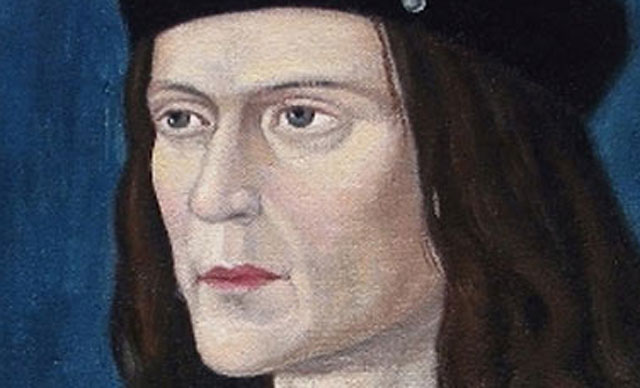The historian who inspired the successful search for the last resting place of Richard III will deliver the annual Dudley White Lecture at the University of Essex on Wednesday 8 May.
Dr John Ashdown-Hill, who completed his PhD at the Department of History at Essex, will bring together two threads of his research work for the free lecture at the Lakeside Theatre which will discuss the fates of King Richard III and his cousin John Howard, the Duke of Norfolk.

Richard III
Both were killed at the Battle of Bosworth in 1485 and Dr Ashdown-Hill will discuss their intertwining lives and their links to the Eastern region while also looking at the different ways their bodies were treated after their deaths and where they both now rest.
Research by Dr Ashdown-Hill helped to locate the skeletal remains of the last Plantagenet king last year. He argued against a widely-accepted 17th Century myth that Richard III had been thrown into the River Soar after his defeat at the Battle of Bosworth. He also published new evidence to suggest Richard III had been buried at the Grey Friars church, now the site of a car park in Leicester, leading to a major excavation last August.
Since then a link between the remains discovered and Richard III has been confirmed by a team at the University of Leicester, using a mitochondrial DNA link discovered by Dr Ashdown-Hill in 2004. Dr Ashdown-Hill has also published an updated edition of his book on Richard III, titled The Last Days of Richard III and the Fate of His DNA The Book That Inspired the Dig.
Dr Ashdown-Hill has written extensively about John Howard, who in just 30 years rose from being a relatively obscure Suffolk gentleman to become the Duke of Norfolk, Earl Marshal, Lord Admiral and a very rich man with strong connections to the House of York.
Dr Ashdown-Hill said: “John Howard was a local man. He was born in Stoke-by-Nayland, was Constable of Colchester Castle and had a house in Colchester. Through him Richard III has links to the area as he visited Howard here before he became king.
“Both died at the Battle of Bosworth and it is interesting to look at them in parallel.”
Richard III’s body was put on public display following the Battle of Bosworth and then buried in Leicester. Howard’s body was also brought away from the battlefield, possibly by his son who had fought alongside him. After initially being buried in Leicester, his body was moved to Thetford Priory and then following the Dissolution of the Monasteries his remains according to Dr Ashdown-Hill were moved again to Framlingham Church.
Dr Ashdown-Hill said: “The bodies had quite different fates because Richard III’s had a political significance and the Duke of Norfolk had family whose fortunes eventually revived.”
To book tickets go to: lakesidetheatre.org.uk